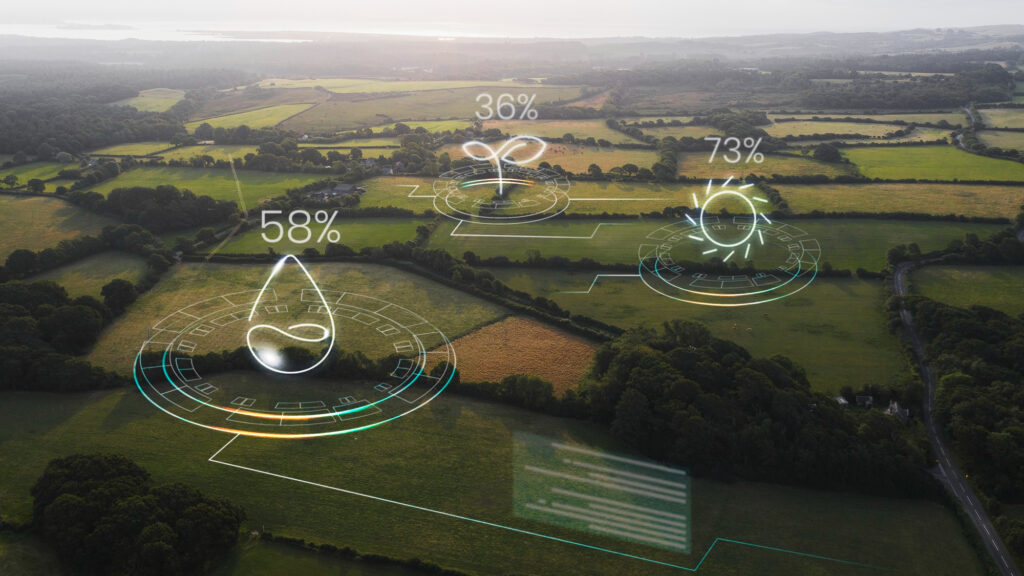Water scarcity and the need for effective water resource management have become critical global concerns. Artificial Intelligence (AI) is emerging as a powerful tool to revolutionise the way we manage and conserve water.
By harnessing the capabilities of AI, We will discuss how AI in water management works and how water management systems can become more efficient, data-driven, and sustainable.
This article delves into how AI is transforming water management, its key components, benefits, challenges, and frequently asked questions.
How AI in Water Management Works
Data Collection and Monitoring
Before understanding how AI in water management works, let us see how AI powered water management system works.
AI-powered water management begins with the collection of vast amounts of data from various sources, including sensors, satellites, weather forecasts, and historical records.
These data sources provide real-time information about water levels, quality, and usage patterns. AI algorithms process this data to identify trends, anomalies, and potential issues.
Predictive Analytics

AI employs predictive analytics to forecast water demand, availability, and potential water-related issues.
Machine learning models analyse historical data to predict future trends and events, helping water managers make informed decisions.
For instance, AI can predict droughts, flooding, and water contamination risks based on data patterns.
Optimisation and Decision Support
AI-driven optimisation techniques help water managers make optimal decisions about water allocation, distribution, and infrastructure maintenance.
These algorithms consider multiple factors, such as demand, supply, infrastructure constraints, and environmental impact, to suggest the most efficient water management strategies.
Leak Detection and Maintenance
AI-powered systems can detect leaks in water distribution networks through real-time data analysis.
By identifying variations in water flow and pressure, AI algorithms can pinpoint leak locations and notify maintenance teams promptly, reducing water losses and infrastructure damage.
Water Quality Monitoring
AI analyse water quality data to detect pollutants, contaminants, and changes in water composition.
This enables early detection of waterborne diseases and pollution incidents, ensuring safe and clean water for communities.
Energy Efficiency
AI can optimise energy consumption in water treatment processes by adjusting equipment operations based on real-time demand and supply data. This leads to energy savings and reduced operational costs.
Benefits of AI in Water Management

Enhanced Efficiency
AI-driven systems optimise water distribution, reducing wastage and operational costs.
Accurate Predictions
AI predicts water-related challenges, enabling proactive planning and resource allocation.
Resource Conservation
Efficient water management helps conserve this precious resource, addressing water scarcity concerns.
Real-time Monitoring
AI provides real-time insights into water quality and availability, facilitating timely interventions.
Infrastructure Maintenance
AI detects leaks and maintenance needs, prolonging the lifespan of water infrastructure.
Sustainability
AI promotes sustainable water usage by optimising supply and demand dynamics.
Challenges and Considerations
Data Quality
Reliable data is crucial for AI algorithms. Predictions may be inaccurate as a result of inaccurate or inadequate data.
Complexity
Implementing AI systems requires technical expertise and integration with existing water management frameworks.
Cost
Initial setup and maintenance costs for AI systems can be a barrier for some water management entities.
Ethical Concerns
AI decisions should align with ethical standards and prioritise equitable water distribution.
FAQs
How does AI detect leaks in water distribution systems?
AI analyses data from pressure and flow sensors within the distribution network. Sudden changes or anomalies in the data indicate potential leaks, triggering alerts for further investigation.
Can AI help prevent water contamination?
Yes, AI monitors water quality parameters and can identify deviations from normal levels. Early detection allows rapid response to prevent contamination incidents.
How does AI optimise water distribution during droughts?
AI models analyse historical data and weather forecasts to predict water demand. By adjusting distribution strategies, AI ensures equitable water allocation during drought conditions.
Is AI suitable for both urban and rural water management?
Yes, AI can be adapted to various settings. In urban areas, it can optimize water supply to households and industries. In rural areas, AI can help manage agricultural water usage.
What role does AI play in desalination processes?
AI can optimise desalination processes by adjusting parameters such as pressure, temperature, and energy usage, leading to improved efficiency and cost-effectiveness.
Conclusion
Now let is come to the conclusion of How AI in Water Management Works.
AI is a game-changer in water management, offering solutions that enhance efficiency, sustainability, and resilience.
By leveraging predictive analytics, optimisation algorithms, and real-time monitoring, AI empowers water managers to make informed decisions that ensure the responsible use and conservation of this invaluable resource.
As technology continues to advance, AI’s role in addressing global water challenges will become even more significant.


